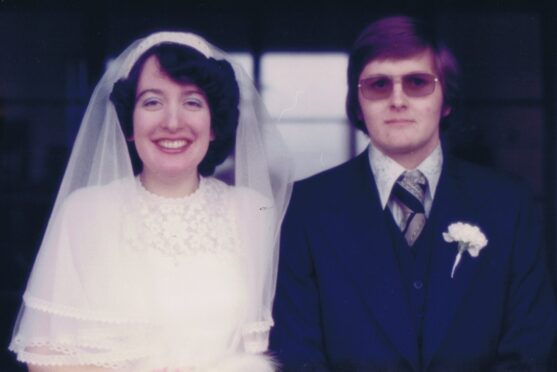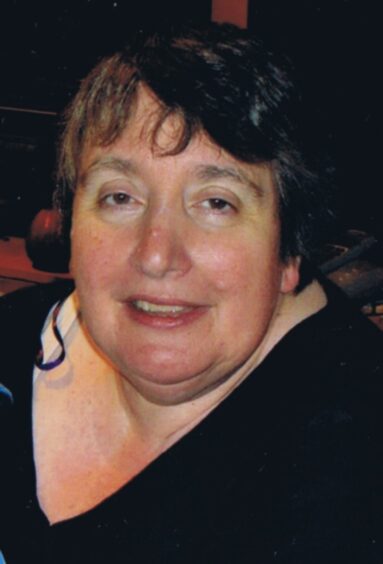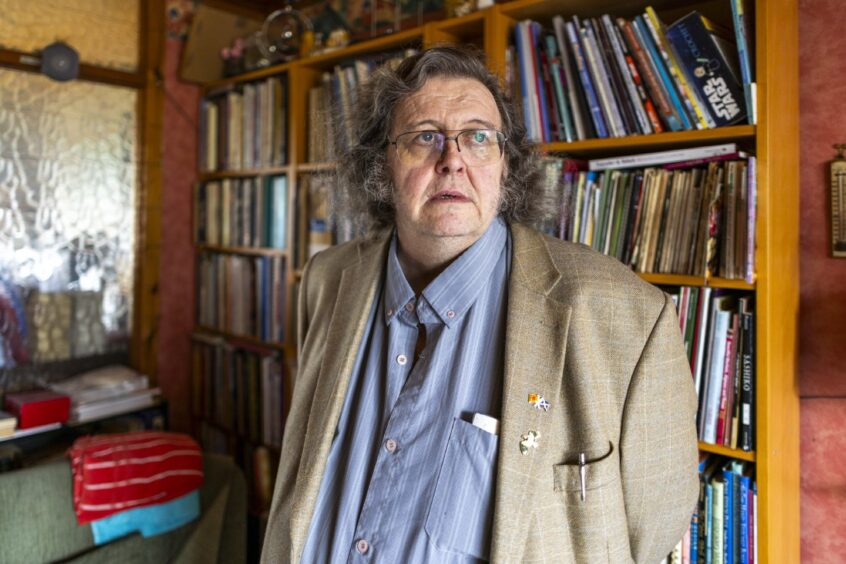
Last week The Sunday Post carried an article about assisted dying.
John Robins, from Dumbarton, read the piece as he sat with his terminally ill wife Mary.
She died the following day.
Here, he outlines his support for assisted dying.
My wife died at 5pm on Monday, March 4, 2024. Mary was 71. We were married for 45 years. Before she retired Mary was a librarian for the NHS and the Medical Research Council.
Mary was a loving partner, devoted mother and grandmother and retained her Christian beliefs. She was a gifted craft worker, an avid reader and enjoyed time with friends and family.
Mary had complex medical problems. For the last 25 years she suffered from chronic lymphoedema and severe arthritis.
Her employers, the NHS, and the welfare system supported Mary to allow her to continue working.
However, sometimes her pain became unmanageable. She attended several specialist pain clinics. She tried various drugs, acupuncture, electronic pain relief devices and therapeutic clothing. These helped, but 10 years ago it all became a bit too much and she took early retirement.
Three years ago her health deteriorated further. Mary became housebound. She didn’t leave the house until six months ago when she was rushed to hospital.
Diagnosed with terminal pancreatic cancer, Mary came home to die. Over the last six months she had fantastic care from care workers and nurses from at least six different organisations including the NHS, charities and private companies. The NHS supplied specialist equipment to help people care for her and allow her to stay at home.
Over the last four weeks Mary’s condition deteriorated rapidly. She became incontinent. It took a hoist and three carers to turn her on her side and clean her. This happened up to three times a day.
This process terrified Mary. She started to dread the arrival of carers whose visits she previously enjoyed. I had to give her a powerful tranquiliser and an extra dose of strong painkiller before they arrived.
Gentle as the carers were, the process still caused Mary pain and stress.
In the last week Mary was on morphine patches and oral liquid morphine. She could not eat and had difficulty swallowing fluids.
The nurses said they would do all they could to control her pain but could not guarantee to keep her totally pain and stress-free.
I asked if she would die of thirst. It was confirmed as a possibility but more likely her major organs would fail and she would die of a heart attack.
Over the last week we wobbled along a tricky tightrope. We tried to balance Mary’s meds to keep her pain free but still able to communicate.
In reality, Mary spent most of the time unconscious, her eyes turned up in their sockets, her breath rasping and gasping.
When the drugs started to wear off she was crying with pain, asking when it was going to end. She called out “No”, “Stop This” and repeatedly, “Help me, help me.”.
All I could do was give her more drugs, but I could see by her eye and hand movements that the drugs were stopping her communicating but not her suffering.
On Monday I called the District Nurses. They arrived within the hour with an infusion pump which put a regulated dosage of painkiller and tranquiliser into Mary’s blood stream. This calmed her down and she showed no sign of pain or stress.
Our son and I held Mary’s hands and gently spoke to her. Two hours later her laboured breathing grew shallower and stopped. Her suffering was over.
I was diagnosed with bladder cancer four years ago and had two operations. A subsequent check-up showed two more tumours and I had major life-changing surgery. I was then diagnosed with several aggressive tumours in my lymph nodes and given a year to live. I’m now six months into extra time.
Mary and I discussed euthanasia and agreed it was an option we would both seriously consider. Unlike many people we could raise the circa £20,000 each it would cost. There was a major drawback. We would have to travel to a clinic, probably in Switzerland. I spoke to the widow of a colleague who took the Swiss option and she told me he died weeks, if not months, before he really wanted to because he had to go while he was fit enough to travel.
Mary and I were in favour of the Assisted Suicide (Scotland) Bills put forward by Margo MacDonald MSP in 2011 and 2013. We also supported the current attempts by Liam McArthur to get an Assisted Dying for Terminally Ill Adults (Scotland) Bill through the Scottish Parliament.
If Scotland had such a law Mary could have been spared two or three weeks of severe fear, stress, pain and suffering. She could have had a painless, dignified death with close family beside her.
What astonishes and angers me is that the main opposition to legalising assisted dying for the terminally ill comes from people and organisations who believe death is a gateway to a wonderful afterlife. Why do they insist on electrifying that gateway and ringing it with barbed wire?
Are their gods sadistic? Have Christians misread their bible and believe Jesus said, “Little children must suffer before they come unto me”? Perhaps they still believe suicide is a mortal sin?
If I let a dog go through what my wife has just gone through I could be prosecuted for cruelty and neglect for failing to have a vet humanely stop it suffering.
People who want to end their lives before suffering the final days or weeks of a terminal illness should have the right to that in a safe, controlled environment under sensible, well-designed legislation.

Enjoy the convenience of having The Sunday Post delivered as a digital ePaper straight to your smartphone, tablet or computer.
Subscribe for only £5.49 a month and enjoy all the benefits of the printed paper as a digital replica.
Subscribe
 © Jamie Williamson
© Jamie Williamson